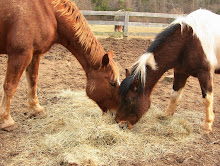Full care board includes
- Stall with turn in/out daily
- Clean shavings provided
- Quality grain and hay
- 2 water buckets filled daily or more if needed
- salt lick if owner desires-at manager's expense
- hay net in stall
- round bales in paddocks during winter
- supplements fed if provided by owner
- blanketing as needed
- catching/holding for farrier and vet
Use of barn amenities:
- Hot/cold water wash stall-IN BARN-with mats and heat lamp
- Heated tack room
- Washer/dryer
- Sink with hot/cold water
- Fans in stall during summer
- Trails from property
- LOADS of Montgomery County parks with trails within a short hauling distance
- Professional trainers on site daily-Horses are their full time profession.
- Center of 3 day eventing Area II for the eventers out there!
- Large outdoor arena with lights
- PAVED drive all the way to the barn
- Barn parking lot and driveway are usually plowed in winter for easy access
- The Surrey, the local tack shop is a short drive away. Tell them you are with us and receive a 10% discount!
Loretta the natural horseman clear communication/visible results







